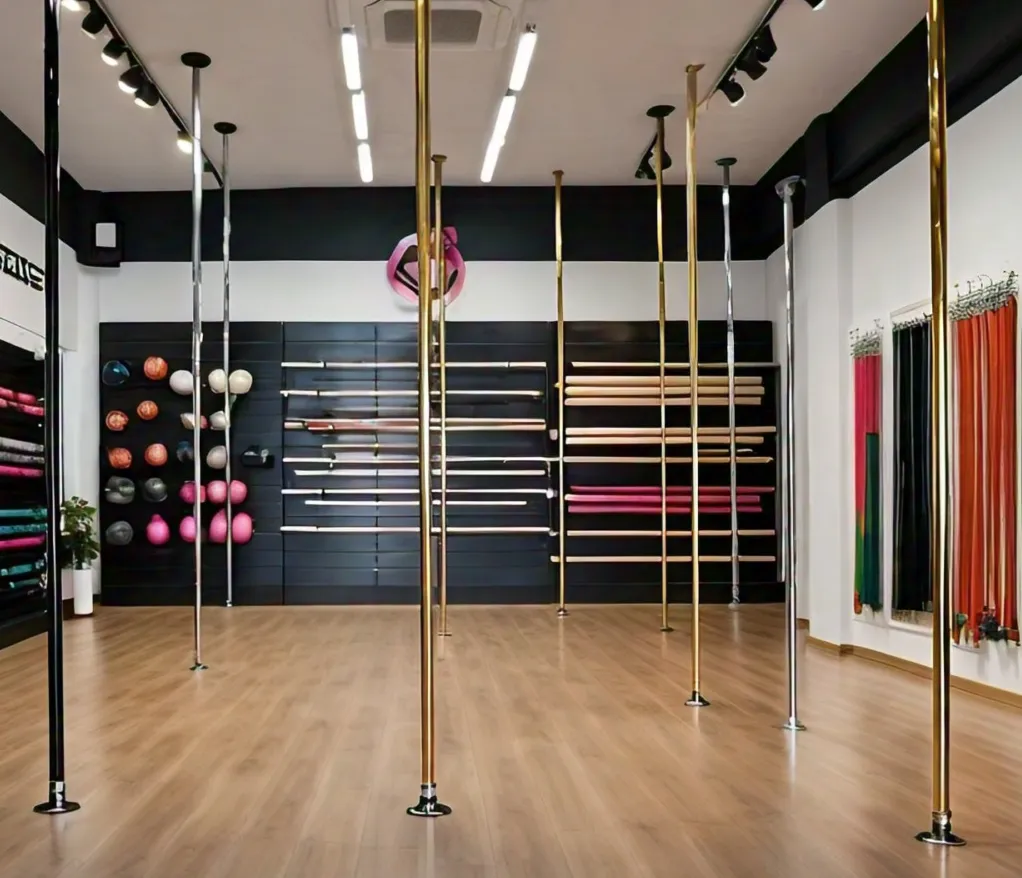
How To: Buy A Home Pole
The Ultimate Guide to Buying a Home Pole for Pole Dancing
So, you've decided to bring the exhilarating world of pole dancing into the comfort of your own home. Whether you're a beginner looking to practice in private or an experienced dancer aiming to hone your skills, choosing the right home pole is essential for safety, performance, and enjoyment. Here’s a comprehensive guide to help you navigate the process of buying a home pole for pole dancing.
Step 1: Determine Where You Will Put The Pole
1.1 Measure Your Space: Ensure you have adequate ceiling height and floor space for pole dancing. Most poles are adjustable to fit various ceiling heights, but it’s crucial to measure accurately.
Step 2: Choose the Right Type of Pole
2.1 Static vs. Spinning Pole: Static poles are fixed and do not spin, making them good for beginners and those focusing on strength training. Spinning poles rotate, allowing for dynamic movements and fluid spins, which are preferred by more advanced dancers and performers. Most people will select poles that convert easily from static to spinning which will allow for training flexibility and growth.
Our top choice: a combination pole that does both static and spin
2.2 Material: Poles are typically made from stainless steel, chrome-plated steel, or brass. Stainless steel is durable, low-maintenance, and hypo-allergenic while chrome-plated steel provides a smoother surface for spins. Brass poles offer a high grip, making them suitable for dancers who prefer extra grip during performances. If you are planning to compete, most competitions are done on stainless steel poles.
Our top choice: stainless steel
2.3 Diameter: Poles come in 38mm, 40mm, 45mm and 50mm. 45mm is the most common diameter and generally used for competitions. A smaller diameter will make moves that require hand grip easier, but will make leg grips more challenging. A larger diameter will be easier for leg grips, but more challenging for hand grips.
Our top choice: 45mm
Step 3: Consider Safety and Stability
3.1 Weight Capacity: Check the weight capacity of the pole to ensure it can safely support your weight and accommodate dynamic movements.
3.2 Installation: Most home poles are tension-mounted (pressure-mounted), meaning they do not require drilling into the ceiling and floor. Ensure the pole comes with detailed installation instructions and consider professional installation if needed.
3.3 Stability: Look for features like silicone pads or rubberized pads at the top and bottom of the pole to protect your ceiling and floor while ensuring stability during use.
Step 4: Research Brands and Read Reviews
4.1 Research: Explore reputable brands known for producing high-quality home poles. Look for brands that prioritize safety, durability, and customer satisfaction. Our recommended brands are X-Pole and Lupit Pole.
Custom HTML/CSS/JAVASCRIPT4.2 Read Reviews: Customer reviews can provide valuable insights into the pole's performance, ease of installation, durability, and customer service.
Step 5: Budget Considerations
5.1 Price Range: Home poles can range in price depending on factors like material, brand, and features (static vs. spinning). Set a budget based on your needs and research within that range.
5.2 Additional Costs: Consider additional costs such as shipping fees, optional accessories (like crash mats or grip aids), and potential professional installation if needed. A crash mat is highly, highly recommended.
Step 6: Purchase and Installation
6.1 Purchase: Once you’ve selected the right home pole for your needs and budget, make your purchase from a reputable retailer or directly from the manufacturer’s website.
6.2 Installation: Follow the manufacturer’s installation instructions carefully. Ensure the pole is securely installed and test its stability before using it for pole dancing.
Step 7: Maintenance and Care
7.1 Cleaning: Clean the pole regularly using a pole cleaner or a solution of rubbing alcohol and water to remove sweat and maintain grip.
7.2 Inspection: Periodically inspect the pole for any signs of wear, loose screws, or instability. Tighten screws as needed and replace parts if necessary to ensure safety.
Step 8: Enjoy Your Pole Dancing Journey
Congratulations! You’ve chosen and installed your home pole for pole dancing. Now, it’s time to enjoy the freedom and creativity of pole dancing in your own space. Practice regularly, experiment with new moves, and most importantly, have fun expressing yourself through this empowering art form.
Pole dancing at home offers endless possibilities for fitness, self-expression, and personal growth. With the right home pole and dedication to practice, you can elevate your pole dancing skills and experience the joy of mastering new moves right in your own living room. Happy dancing!
